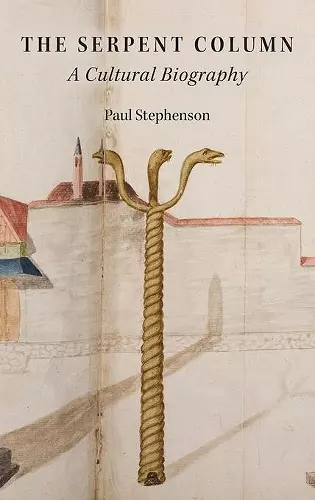The Serpent Column
A Cultural Biography
Format:Hardback
Publisher:Oxford University Press Inc
Published:18th Aug '16
Currently unavailable, and unfortunately no date known when it will be back

This book explores the rich cultural history of The Serpent Column, a monument that has evolved in meaning from ancient Greece to modern Istanbul.
In The Serpent Column, Paul Stephenson intricately weaves together various narratives to explore the cultural biography of a remarkable monument that has withstood the test of time. Originally erected in Delphi over 2,500 years ago, this bronze sculpture symbolizes a rich tapestry of myth and history, representing the primordial combat myth of the Near East. The Serpent Column commemorates the Greek victory at the Battle of Plataea in 479 BC, where the skies were filled with serpentine constellations. Erected as a votive offering to Apollo, it also served as a testament to the unity of the Greek city-states against Persian forces.
As the column was relocated to Constantinople, now Istanbul, it transformed into a significant monument within the hippodrome, retaining its identity as a symbol of cosmic victory. However, its meanings evolved over the centuries, particularly during the Byzantine era, where it took on Christian interpretations. Observers began to associate the column with biblical serpentine imagery, reflecting on its connections to the Temple's brazen pillars and the serpent in Genesis. This multifaceted symbolism allowed the column to resonate with various cultural narratives, linking it to themes of creation and eschatology.
Despite its religious associations, the most enduring interpretation of the column has been its role as a talisman against snakes and snake bites. This belief has persisted through the ages, captivating travelers and tourists alike who visit Istanbul. In The Serpent Column, Stephenson masterfully unravels the diverse stories surrounding this unique monument, showcasing its significance across different cultures and epochs.
Paul Stephenson has set a new landmark and a new benchmark in writing the history of objects and the writing of history through objects. The extraordinary fertility of his research, the subtlety of his arguments, the elegant economy of his prose, and the uniqueness of the object all make this a hard act to follow. ... He is, however, the first to label his work a cultural biography. It sounds pretentious, but it aptly echoes late antique and Byzantine beliefs in the animation of statues, and effectively states what should be every historians ideal: to ensure that the relics of the past get a life however inanimate and truncated they may be. * Paul Magdalino, University of St. Andrews, Emeritus, American Historical Review *
It is a good story, well told. * Mark Whittow, The Times Literary Supplement *
ISBN: 9780190209063
Dimensions: 213mm x 137mm x 31mm
Weight: 635g
304 pages